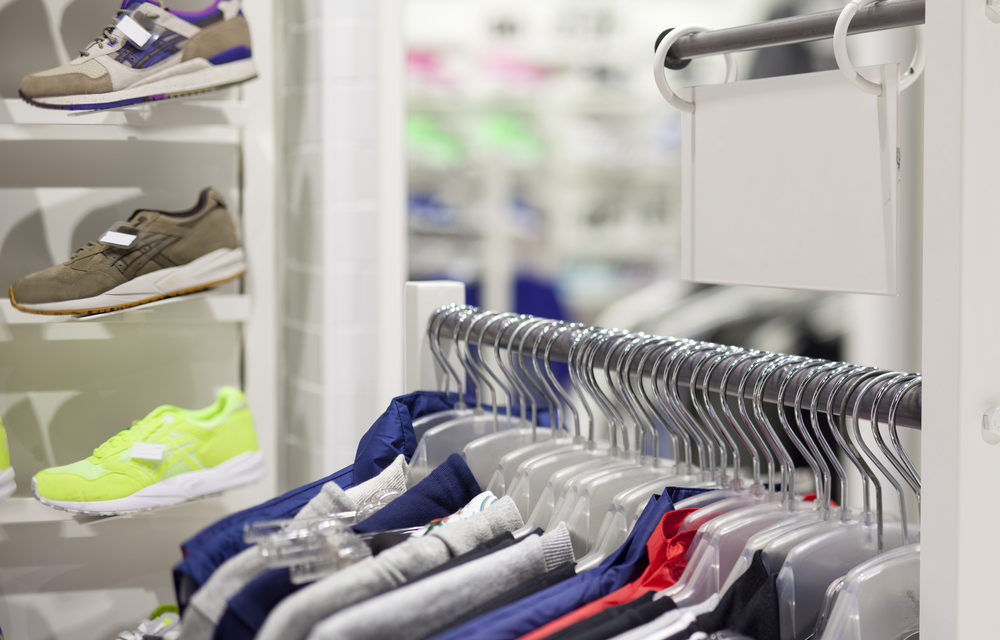Another label that’s seeking more direct-to-consumer sales
The slumping sporting goods retail sector is taking a toll on brands. Feeling the pinch is Under Armour, which posted a quarterly sales decline of 5% on Tuesday, its first ever quarterly drop.
Under Armour’s direct-to-consumer sales surged 15%, but results were dragged down by a 13% slide in wholesale sales to specialty sports and other retailers.
In a conference call on Tuesday, Chief Executive Kevin Plank noted the challenges faced by the retail sector, describing it as “pinned in a multi-year struggle to evolve past its legacy architecture.”
And he was not optimistic about change in the near future. “As we look to close out 2017, we do not expect these conditions to improve,” he said.
Under Armour isn’t alone. Larger rival Nike recently also reported declining North America fiscal Q1 wholesale revenue that led to flat companywide revenue growth. Meanwhile, in other sectors, toymakers Mattel and Hasbro have also been hurt by the bankruptcy filing of Toys “R” Us.
RELATED LINKS
Dick’s Sporting Goods’ ChallengeScrambling to Respond to a Market That’s in ‘Panic Mode’
While bankruptcy filings of retailers from the Sports Authority to Gander Mountain have translated to promotional closeout sales that hurt demand at other retailers and forced other chains to cut their prices, the specialty retail sector is also grappling with the bigger issue of declining store traffic and increased online competition. Dick’s Sporting Goods, for instance, is beefing up its own ecommerce site and vows to be more price competitive. To diversify and put more control into their own hands, brands like Under Armour and Nike also are expanding their own online sales or striking new deals with retailers like Kohl’s for Under Armour and Amazon for Nike.
However, it’s not just struggling retail traffic and increased online competition that’s been hurting both Under Armour and Nike. The so-called athleisure trend has led retailers and fashion labels across the board to unveil their own style-oriented athletic collections, which appear to have crimped demand for performance-focused products.
Let’s connect more shoppers to things they need and love.
In retail today, the advantage goes to those with access to large-scale data assets. That’s why, according to a report conducted by Forbes Insights and Criteo, nearly 75% of top brand and retailer executives saw pooled data as a way to compete, connect, and win.
Under Armour’s Plank noted the shift to “lifestyle” from performance products, which he said represent some 90% of Under Armour’s business. He said the company is seeking to shorten its product cycle time to be more responsive to what consumers want. “We’re really focused on having product that’s trend-right, style-right, fit-right, color-right and being there in the right place at the right time and at the right price.”
But sports brands are dealing with some significant challenges. The basketball sneaker sector, primarily dominated by such shoes as Nike’s $150-$200 Air Jordan line, is about “halfway through its five-year downward cycle,” said NPD Group’s sports industry analyst Matt Powell.
“The category will continue to be a drag on the industry,” he said. “With a lack of compelling new technology to drive the performance business, we can expect performance shoes to remain soft for the balance of the year.”
Not all major sneaker players are experiencing the same downturn. Adidas, which also owns Reebok, said in its most recent quarterly announcement that its global sales excluding currency impact jumped 19%. The combined sales growth of Adidas and Reebok in North America was 26%.

“Adidas repositioned itself in the U.S. market as a fresh brand with unique product to offer,” Powell said. “Adidas will remain in this position for holiday 2017, but, as no other major brands have stepped up, the athletic footwear industry as a whole will be impacted and we can expect overall sales to be soft closing out the year.”
by Andria Cheng

